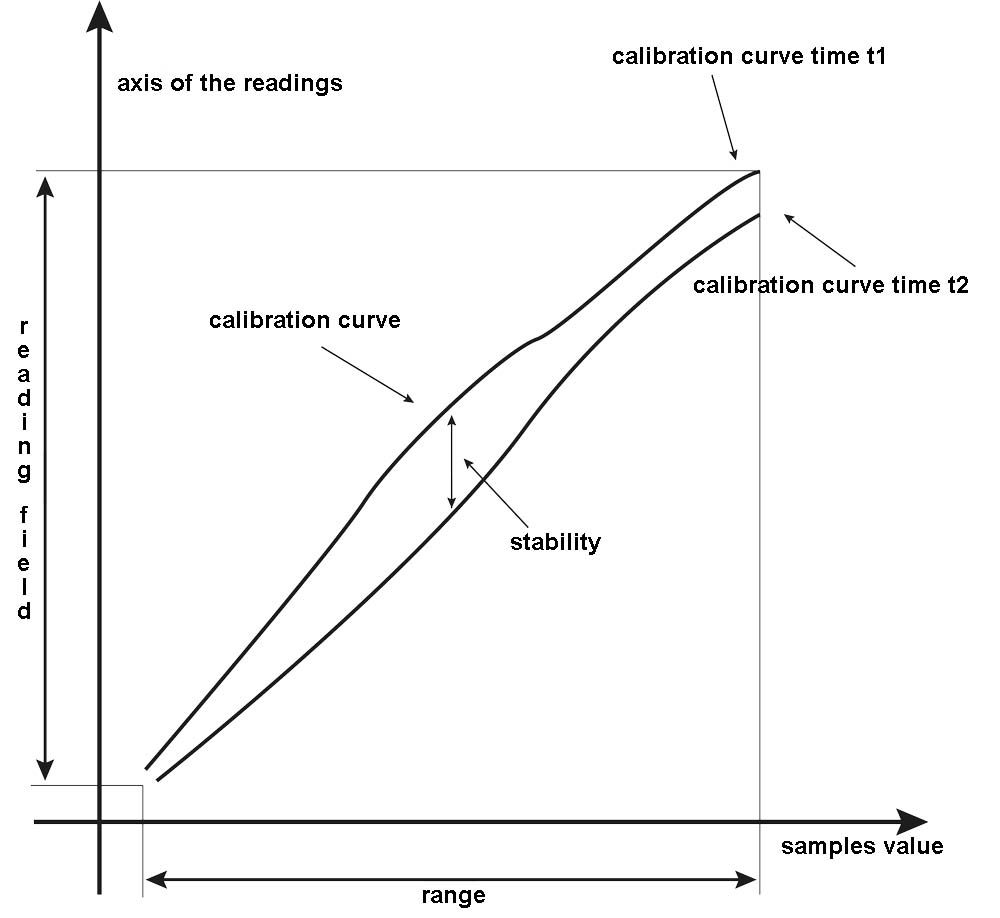The stability is the attitude of an instrument to provide readings a little different between them, in readings independently performed on the same measurand within a defined time interval, with a unified process and under the same conditions for influence quantities. The stability of a measuring instrument is essentially the ability to maintain its metrological characteristics over time. Stability is also called "drift"; in fact, the instrument drift is defined as the time variation of an indication, due to variations in metrological properties of a measuring instrument. Therefore, stability can be obtained by comparing two calibration curves performed at different times but made under the same conditions. (see chart below).
